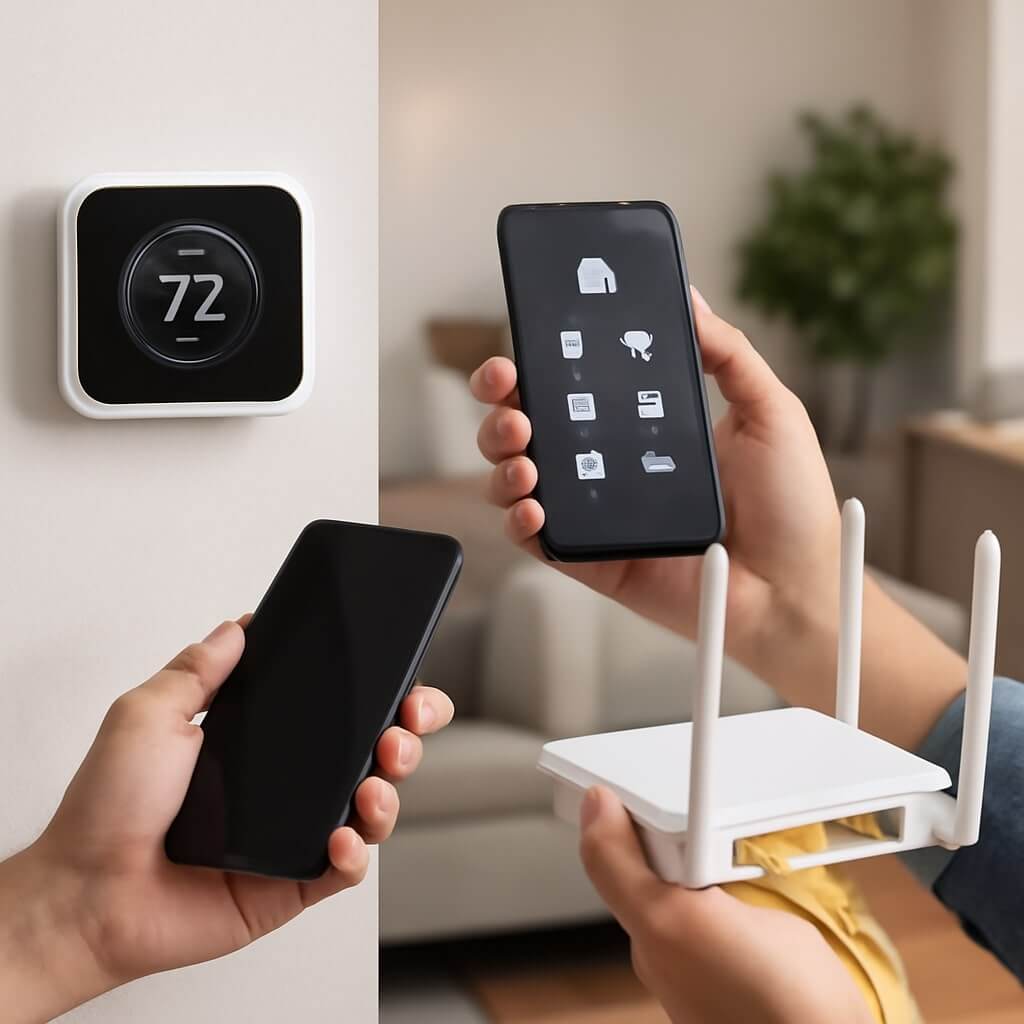Maintaining your smart home systems is essential for ensuring their longevity and performance. By focusing on firmware updates, network security, and routine maintenance, you can greatly enhance both functionality and security. Each of these elements plays an important role in protecting your investment and ensuring seamless operation. Understanding how to implement these strategies effectively will make all the difference in your smart home experience. So, what are the key steps you should take first?
Key Takeaways
- Regularly update device firmware to enhance security and functionality, following a monthly schedule or as recommended by manufacturers.
- Optimize network security by using complex passwords, adjusting firewall settings, and monitoring incoming traffic for unauthorized access.
- Conduct routine maintenance by cleaning devices, checking for obstructions, and ensuring batteries are replaced proactively to avoid failures.
- Stay informed about new cybersecurity threats and adjust your network security settings and device performance checks accordingly.
- Create a comprehensive maintenance plan that includes routine checks for firmware updates and device functionality to ensure optimal smart home performance.
Regularly Update Device Firmware

To keep your smart home running smoothly, regularly updating device firmware is essential.
Firmware benefits include enhanced security, improved functionality, and access to new features. By establishing an update schedule, you ascertain that your devices operate at peak performance. Check for updates monthly or as recommended by manufacturers.
Ignoring firmware updates can lead to vulnerabilities and malfunctions, negatively impacting your smart home experience. Additionally, some devices may require you to manually initiate updates, so stay vigilant.
Prioritizing firmware updates not only protects your investment but also enhances the overall efficiency and reliability of your smart home ecosystem.
Optimize Your Network Security
While smart home devices offer convenience, they also introduce potential security risks if your network isn’t properly secured.
To optimize your network security, begin by adjusting your firewall settings to block unauthorized access and monitor incoming traffic. Regularly review these settings to adapt to new threats.
Additionally, practice strong password management; use unique, complex passwords for each device and change them periodically. Consider using a password manager to keep track of them.
Conduct Routine Device Maintenance

After securing your network, it’s important to focus on the maintenance of your smart home devices.
Regular device cleaning is essential to guarantee peak functionality; dust and debris can interfere with sensors and cameras. Make it a habit to wipe down surfaces and check for any obstructions.
Additionally, perform routine battery checks to avoid unexpected device failures. Replace batteries proactively, especially in critical devices like smoke detectors or security cameras.
Conclusion
By prioritizing firmware updates, strengthening your network security, and conducting routine maintenance, you can greatly enhance the performance and longevity of your smart home systems. These proactive measures not only protect your devices from potential threats but also guarantee they operate efficiently. Regular attention to these aspects will safeguard your investment, allowing you to fully enjoy the convenience and innovation that smart home technology offers. Embrace these strategies for a seamless and secure smart home experience.


